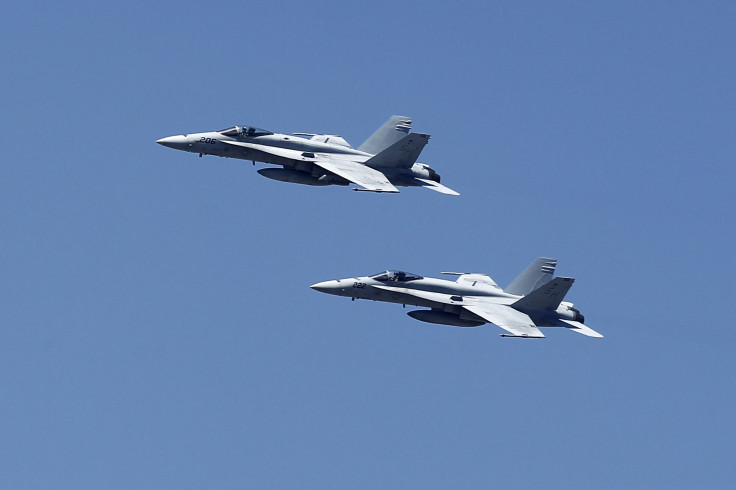Russian Military Activity Increasing? NATO Intercepts Surveillance Aircrafts Over Baltic Sea

NATO scrambled fighter jets to intercept Russian aircraft in the proximity of allied airspace over the Baltic Sea on two separate occasions this week, the organization confirmed Tuesday. The incidents occurred amid concern that the Russian military has increased activity in the region in recent days.
Two Canadian F-18 Hornet fighters intercepted a Russian surveillance plane on Monday, the Associated Press reports. The NATO aircraft followed the surveillance plane for about 15 minutes and determined that it didn't constitute a threat to allied forces. “Once identification was successful, the intercept mission was completed and the two Hornets returned to their base [in Lithuania],” NATO said in a statement. The Russian aircraft remained in international airspace throughout the encounter and never crossed into sovereign territory, Lt. Col. Robert Gericke said.
In a separate incident, the Latvian military said that NATO fighter jets were deployed on Tuesday to intercept a Russian surveillance aircraft flying over the Baltic Sea. Gericke confirmed the incident, but additional details on the encounter weren't immediately available. NATO said Tuesday that it regularly scrambles fighter jets to assess potential threats to the airspace of member nations. The alliance maintains a force of 16 fighter jets to defend the Baltic region.
The interception of the Russian surveillance plane occurred just days after Sweden released a photo of what was believed to be a foreign submarine operating less than 30 miles from the country’s capital in Stockholm, Reuters reported. Three separate sightings confirmed the presence of a submerged vessel.
The Swedish military began its hunt for the vessel after it intercepted a radio transmission in Russian on an emergency frequency, sources told local newspaper Svenska Dagbladet. However, the Russian Defense Ministry has denied involvement in the incident.
“Russian Navy ships and submarines are fulfilling their duties in the world ocean waters in accordance with the plan,” a defense ministry official said, according to Interfax news agency. “There are no extraordinary, let alone emergency, situations involving Russian warships.”
Coupled with its actions in Ukraine, Russia’s increased military activity over the Baltic Sea has led to increased tensions between Moscow and NATO. Finnish military officials claim that Russia has violated Finland’s airspace five times in 2014, while NATO has intercepted Russian aircraft on at least two other occasions since September.
“Russia is modernizing its military equipment and testing it, but there are also more military exercises,” former Swedish defense minister Karin Enström told Newsweek. “It’s a sign of Russia increasing its military capabilities, both when it comes to equipment and fighting abilities. These developments in combination with the war in Ukraine are very serious and alarming. Ukraine is impacting on our part of the world very negatively.”
© Copyright IBTimes 2025. All rights reserved.






















